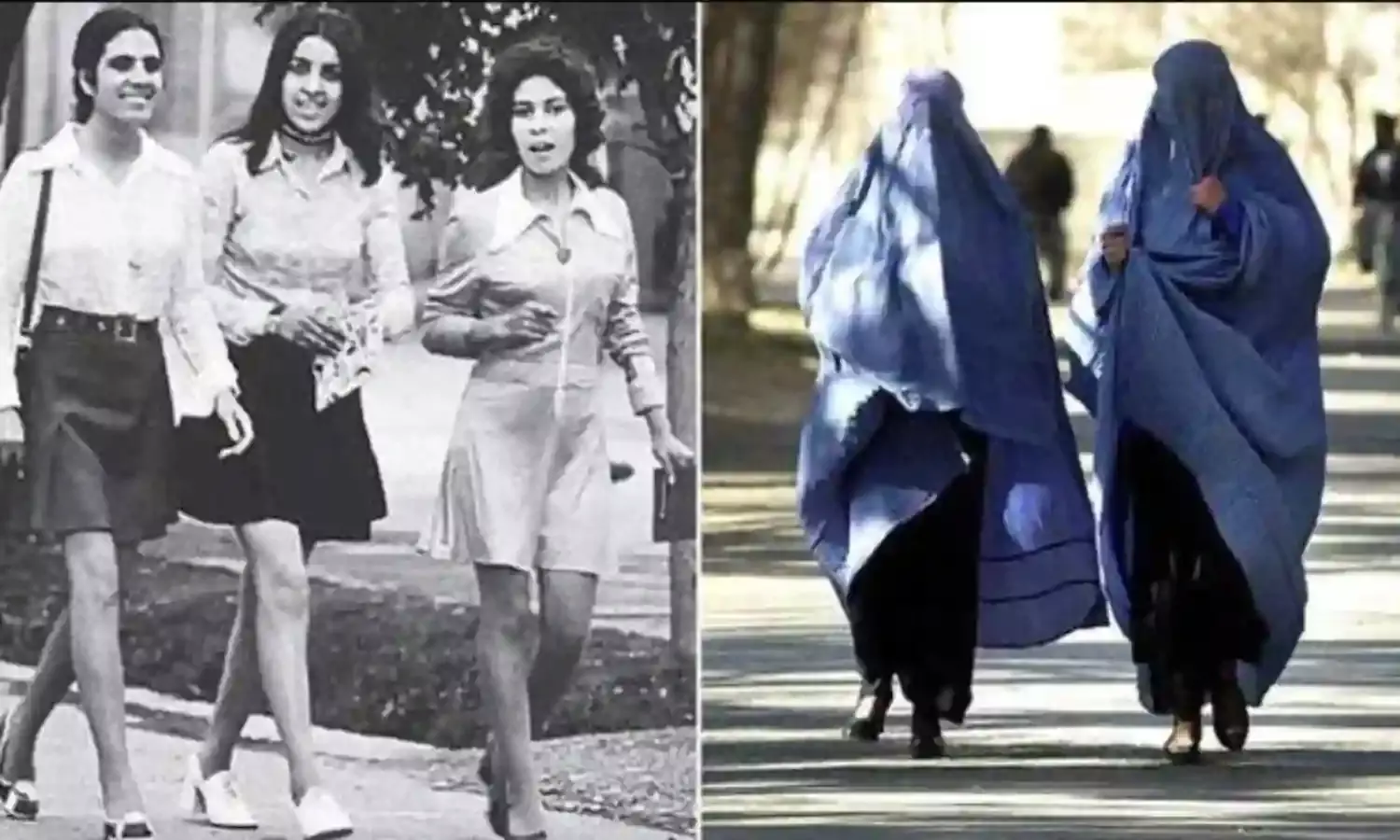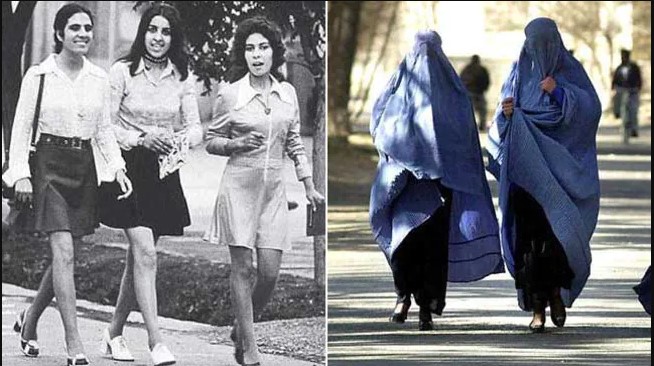Afghan Women’s Long Struggle for Equality
Patriarchal controls

Women are 48% of the population of Afghanistan, but this huge section of society has always been deliberately and systematically marginalized, socially, economically and politically, by males who have used a particular interpretation of Islam to justify their harsh actions.
Off and on, Afghan women have come out of their shells, thanks to particular liberal rulers. But these episodes have typically been short-lived, as eventually, the conservative Islamists have come back, as indeed they have now.
Abdur Rahman Khan, who was the Emir of Afghanistan from 1880 to 1901 was a modernizer. He gave women the right to divorce, raised the legal age of marriage, and gave them the right to own property. His son and successor Habibullah (1901–19) followed in his father’s footsteps in this regard.
The position of women improved further during the reign of Amanullah (1919–29) who was inspired by the reforms of Kamal Ataturk in Turkey. Amanullah granted civil rights for all, including women.
“He outlawed strict traditional dress codes, and Queen Soraya set the example by removing her own veil in a very dramatic and public display,” writes Scott Levi in the journal Origins. New schools were opened for both boys and girls, even in rural areas; forced marriages were outlawed; and an attempt was made to ban polygamy.
But backlash did not take long to appear. Amanullah was overthrown in 1929 by conservative forces led by Nadir Shah ( 1929-33). Nadir Shah closed girls’ schools and women were put behind veils.
However, relief came when Nadir Shah was assassinated in 1933. His successor, Zahir Shah (1933–73) and his cousin Daoud Khan, restarted women’s liberation. Girls’ schools were opened and the franchise was extended to women.
“In urban areas women attended college, took jobs outside of the home, ran businesses, and some even ventured into politics. Kabul became cosmopolitan,” Levi says. As in the West, urban women were out in skirts. Indeed, Kabul was more Westernized than any city in the Indian sub-continent at that time.
In 1978, the communists took over and made dramatic all round social changes touching every class. But communist ideology, marked by a denial of God and sweeping reforms based on an alien system, did not go down well with the traditionally very conservative population, especially the rural population. But resistance to communist rule led to an unexpected result – the Soviet military intervened in 1979.
Soviet intervention immediately led to the formation of an Islam-based militant group, the Mujahideen, funded and armed by the anti-Soviet US and sheltered by Pakistan. Since the Mujahideen were fighting for a conservative brand of Islam against alien communism, they put women behind the veil again.
During the movement and also after the exit of the Soviets, acid was thrown on uncovered female faces. The mujahideen allowed women to continue attending school, but female news reporters were barred from being visually represented on television. The screen showed only a picture of a rose as the women read the news! Later on, females were banned from reading the news all together.
The US turned a blind eye to these as it was mobilizing all the Islamic forces for its anti-Soviet war. According to Scott Levi, since men died in large numbers, widows were reduced to begging, rape was commonplace, and suicide more frequent.
Rape by armed guards of the various warring Mujahideen factions was condoned by their leaders. It was viewed as a way of intimidating vanquished populations, and of rewarding soldiers.
Fear of rape drove women to suicide, and fathers to kill their daughters to spare them the degradation. Scores of women were abducted and detained, sexually abused, and sold into prostitution, Levi says. Most girls were victimized and tortured - because they belonged to different religious and ethnic groups.
After the Soviets were driven out, the Mujahideen took control. But the ethnically diverse and disunited Mujahideen proved to be incapable of ruling. The Pashtun-dominated Taliban promised law, order and a puritanical Islam as the panacea for Afghanistan’s ills. Most Afghans, including women, fell for this offer.
Upon seizing power in 1996, as expected, the Taliban blocked girls' access to education after the age of eight. Women were forbidden from working; They were forced to cover their entire bodies when in public, including their faces. They were forbidden from seeking treatment from a male doctor unless accompanied by a male family member. It was made illegal to display any images of women, either in public or in the home, Levi says.
When the US removed the Taliban from power in 2001, following the 9/11 outrage, fortune began to smile on Afghan women again. Women’s education re-started and women were admitted to the workforce in the urban areas. Women were appointed to high government posts and began to participate in the Loya Jirga (the Grand Council).
However, behind the veneer of liberation, there was a tendency to put restrictions on women only to keep the militant Islamists at bay. When Hamid Karzai was President he made a law for the Shia minority allowing a husband to starve his wife if she refused to have sex. President Ghani and the US both refused to allow women’s representation in the Doha peace talks with the Taliban.
According to Amnesty International, Zalmay Khalilzad, the US Special Envoy to the talks with the Taliban , had repeatedly said in 2020 that women’s rights — and other issues relating to human rights, political structures and power sharing — should be resolved through the subsequent intra-Afghan talks. “This has been a source of frustration to activists,” AI said in 2020.
However, as the time came for the Americans to leave Afghanistan, the US government tried to get the Taliban to agree to respect the rights of women. The Taliban promised to do so. But after the Americans quit, they declared curbs on women resembling the ones they imposed from 1996 to 2001.
While female education is allowed, co-education has been banned in schools. In the universities, male and female students will be segregated by a curtain, the Taliban said. If male teachers are teaching women, the teacher cannot be visible.
All women have to be veiled and they cannot be employed outside their homes. Females will have rights but strictly under the Shariah law.
Although the international community, including China and Russia, is demanding that the Taliban restore rights enjoyed by women between 1996 and 2001 as a price for diplomatic recognition and developmental aid, it is very unlikely that the Taliban will yield.
Giving in means giving up the Taliban’s very reason for existence, namely the conversion of Afghanistan into an Islamic Emirate based on the Shariah. Moreover, its Council of Ministers and its Prime Minister are known hardline Islamists. The Council also has in it leaders of the extremist Haqqani Network holding key portfolios.




